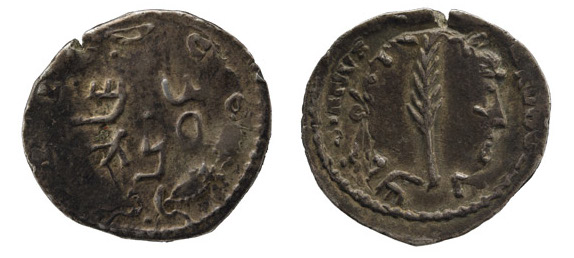This silver coin shows how, in an act of defiance against Roman rule, the Jewish population in the province of Judaea over-struck portraits of the Emperor Hadrian with their own symbols.

Silver shekel of the Second Jewish Revolt, struck over a denarius of the Emperor Hadrian, c. 133-135 C.E., from Judaea, Palestine © Trustees of the British Museum
Rebellion against Rome
Jerusalem had been destroyed by Roman forces in 70 C.E. and the Roman authorities prevented the Jews from rebuilding their temple, which was the focal point of their religious and cultural identity. Moreover, Hadrian decided to re-found Jerusalem as a Roman colony named Aelia Capitolina
This and other measures, such as banning circumcision, prompted the Jews to rise against Rome under their charismatic leader Simon Bar Kokhba, an assumed name, meaning “Son of the Star” (a reference to his divine claim to leadership). The Roman forces were taken by surprise and suffered heavy casualties.
The rebels established their own rule in the territory they held and Bar Kokhba took the title “Prince of Israel” (nsy’ Ysr’l). As well as over-striking Roman coins like this one, they minted their own with highly symbolic and deeply emotive motifs referring to the destroyed Temple of Jerusalem and the rituals associated with it. A new era of “Redemption” or “Freedom of Israel” was declared. Documents dated “Years One to Four” survive and cover the period from March/April 132 C.E. to the time when the Romans re-established control in the autumn of 135 C.E.
© Trustees of the British Museum

